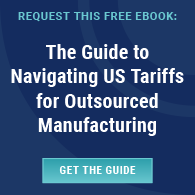How strong are your supplier relationships? The answer to this question can impact many aspects of your business: quality, quantity, on-time delivery, customer satisfaction, and even the long-term growth of your company.
A talented and reliable supplier is the key to product quality, proper quantity, on-time delivery, and price management.
Let’s examine a handful of methods you can use to build strong relationships with your suppliers.
1. Discuss and agree upon goals
A strong supplier relationship starts with being open about the goals involved.
By agreeing on clear goals from the start, both parties may avoid misunderstandings and wasted resources. You may also prevent maverick spending (expenditures outside agreements with vendors) which typically results in extra, non-budgeted costs.
2. Establish KPIs
KPIs, or key performance indicators, are hallmarks of progress toward a desired result. They allow you to take an analytical approach to supplier relationships, measuring everything in black and white. These might often be found in the form of a vendor scorecard, or a supplier scorecard.
Metrics to consider tracking, and regularly communicating about, include:
- Production Defects
- Field Failures
- Corrective Action
- On-Time Delivery
- Cost Savings Target
“What a firm doesn’t measure, it can’t offshore well.” Harvard Business Review
3. Share communication methods
Please advise your suppliers how you prefer to be contacted. With so many choices available, we can all benefit from knowing whether to use email, text, video, or phone. Email is typical but there are compelling reasons to consider Slack or Teams; such as clearer history of conversations than email. Also, we encourage you establish a recurring calendar invite so you both know you’ll always have an opportunity to connect (preferably by phone or in-person). Technology helps us be more efficient but it has not replaced the need for human interaction
4. Make timely payments on agreed terms
A late payment is costly for suppliers. It prevents them from paying their own bills, may create the need for emergency funding, consumes valuable time and distracts suppliers from serving you. It can erode your suppliers’ trust in you as a business partner.
5. Agree upon a list of lead times
When it comes to timing, never make an assumption about how much lead time a supplier requires. Please review and approve lead-times with your supplier. You may also consider discussing terms to establish safety stock which can effectively reduce lead-times.
6. Address concerns as they arise
Discuss any concerns with your supplier as soon as possible. Give them an opportunity to address your concerns quickly and track their response time and effectiveness as part our your KPIs.
7. Create a quality checklist
Supplier relationships are all about the details, but it can be difficult to keep track of everything. Develop a way to easily communicate details on a regular basis. For example, you can create a shared checklist that can be used over and over again to ensure consistency in quality.
The quality checklist may cover standard such as:
- Product requirements, which could include dimensions, color, arrangement, etc.
- Packaging requirements, such as labeling, weight, box dimensions, etc.
8.Schedule periodic in-person meetings
Even the strongest supplier relationship is hard to maintain by email or phone call alone. Please connect in person and add a human touch to your relationship.
Make time for a face-to-face meeting with each of your suppliers. Show them the important place they hold in your list of priorities, and you’ll likely get better service for the duration of your partnership.
This may seem obvious but we have experienced several examples of this. We have consistently improved results for new Customers by increasing communication with them (in a manner that does not waste or burden their time).
9. Develop a plan for rush orders
Rush orders are part of doing business. Prepare for them by developing a plan in advance. Set a specific rush order time frame, and be prepared to pay extra for this service. Most suppliers can fulfill rush orders as long as you’re willing to invest in making it happen.
And remember – there’s nothing wrong with demanding fast orders. Quick turnarounds can be the key to reducing the risk of inventory obsolescence or outshining a competitor at a critical time.
10. Be proactive
In all matters with your suppliers, be proactive. Our mantra is “preventing a problem is always better than fixing a problem!”.
If you need more strategies for improving relationships with suppliers, let us know how we can help.

Al is an entrepreneur, founder, and owner of multiple businesses, including Altraco, an outsourcing and contract manufacturing company. Working across multiple continents and trusted by Fortune 500 companies, Al finds innovative solutions to traditional supply chain challenges. He is a member of Vistage Worldwide.




